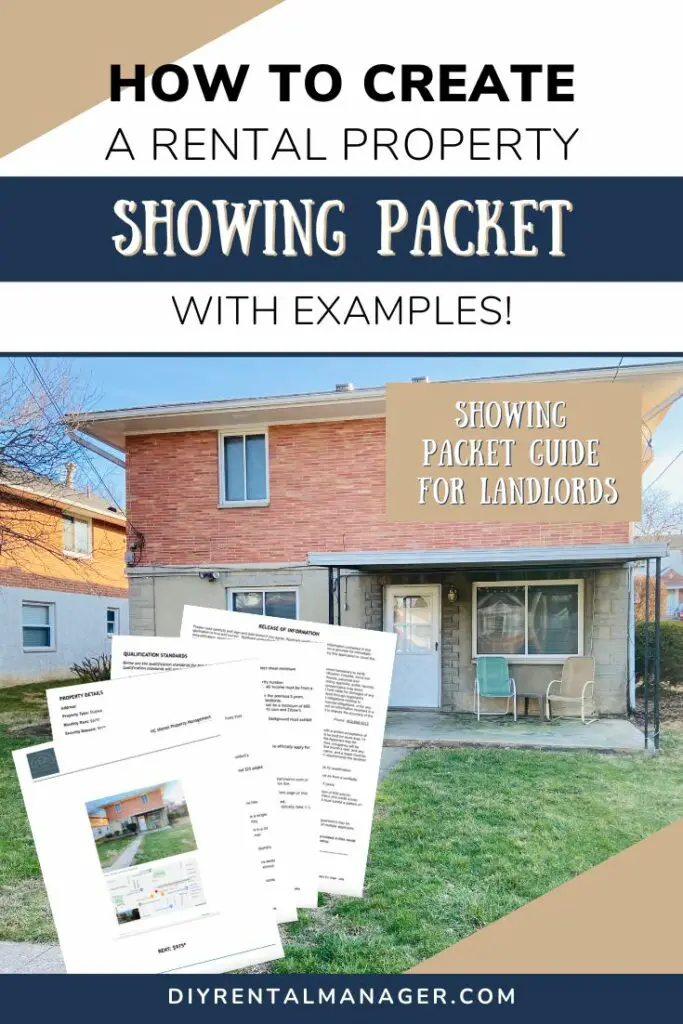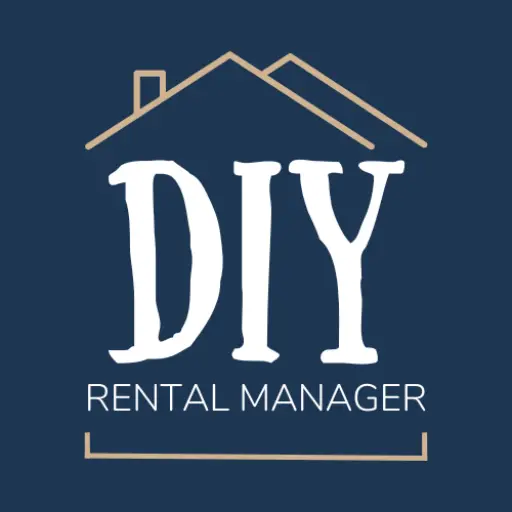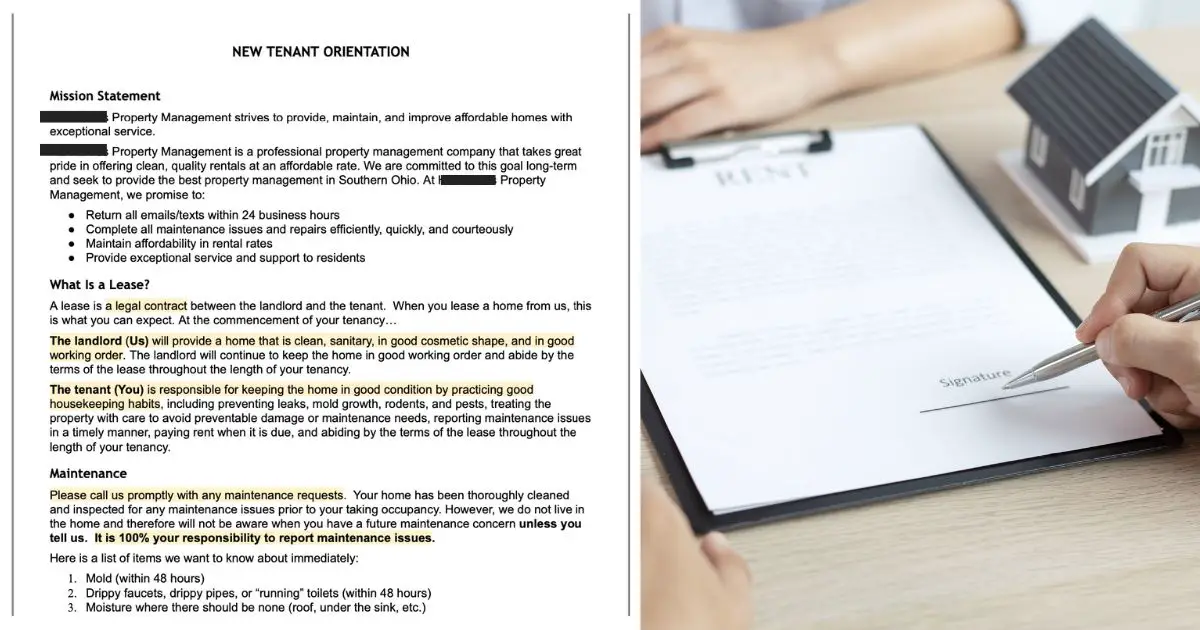Before you show a home to a potential tenant, you want to create a Rental Property Showing Packet that you can hand out when you meet them.
A Rental Property Showing Packet is a packet handed out at the showing to each person over 18. The packet includes the highlights of the property including the rent price, property amenities, pet and smoking policies, the minimum screening standards, and how they can submit an application.
It also includes a Release of Information Form that the potential tenant can sign to grant permission for you to review the information in their application.
The showing packet is useful in helping potential tenants remember which property they viewed, it looks professional, it provides them with all of the information they need to successfully submit an application, and it gives you an opportunity to collect a form that can protect you.
With those main points in mind, I’ll cover everything you need to create a Rental Property Showing Packet that will make your property showing stand out from the rest below.
Let’s dive in!
Quick Navigation
- Add A Cover Page
- Include The Property Details
- List The Qualification Standards
- Explain The Next Steps
- Attach A Release Of Information Form
- Final Thoughts
- Related Content
1. Add A Cover Page
The first page of a Rental Property Showing Packet is the cover page. On this page, we like to keep it simple and display just a few pieces of information:
- Our contact info in the header and footer (include the page number on each page)
- Company name, email, text number, office hours, PO Box
- The property address displayed in large text at the center of the page
- A picture of the outside of the property
- A picture of the property’s location on google maps
- The rent price displayed in large text at the center of the page
This page is mostly supposed to look pretty and remind the potential tenants which property the information is referring to.
That way, when they are on their way home after looking at several properties, they can see a picture of our property and review all of the high-level information to help them make their decision.
So far, it has helped us stand out amongst the other rentals in the area.
2. Include The Property Details
The second page of a Rental Property Showing Packet is the list of property details. This page should be copied and pasted directly from your listing description (if you made a listing description as we do).
Only on the packet, we like to put the short, bulleted list of highlights of the property first. Then we put the listing description paragraph underneath. The highlights include:
- Address (again)
- Property type (duplex, triplex, quad, etc)
- Monthly rent
- Security deposit
- Application fee
- Lease term
- Utilities paid by resident
- Utilities paid by landlord
- Lawncare responsibility
- Pet policy
- Smoking policy
Then we add the full listing description paragraph (a long paragraph or two explaining the amenities in more detail).
This should be the same as the online listing so they can review so they can review the information again after they leave the property without having to pull up the listing on their phone.
3. List The Qualification Standards
The third page of a Rental Property Showing Packet is the list of qualification standards.
Listing out the qualification standards (again) gives the potential tenant another opportunity to see them and disqualify themselves if they don’t fit the criteria. At this point, they should be seeing this list of screening requirements 2-3 times, so there is no excuse if they are disqualified after this point. You’ve spelled them out and given them plenty of chances to ask any questions regarding clarification of them.
Our qualification standards also are copied and pasted from the online listing description and added to this property packet. They read like this:
- Must have current photo identification and a valid social security number.
- Monthly household income must exceed 3 times the rent. All income must be from a verifiable source. Unverifiable income will not be considered.
- Must receive positive references from all previous landlords for the previous 5 years.
- No evictions or unpaid judgments from previous landlords.
- Must exhibit a responsible financial life. Credit score must be a minimum of 600 and no collections of any amount.
- A background check will be conducted on all applicants over 18. Background must exhibit a pattern of responsibility with no felonies from the previous 8 years.
- Must be a non-smoker.
- Occupancy is limited to 2 people per bedroom.
If your screening standards are different, then put the screening standards you use in your packet instead. At a minimum, I recommend checking for a minimum credit score (whatever is slightly higher than the area average in the town your rental is located – you can google this) and checking their background history to make sure they don’t have any felonies from the last 8 years or any evictions on their record.
4. Explain The Next Steps
The third page of a Rental Property Showing Packet also includes an explanation of the potential applicant’s next steps.
It’s time to explain what the potential tenant needs to do next if they are still interested in the home. Our next steps look like this:
- All persons over 18 living in the home must apply through Apartments.com or Zillow (or wherever you want them to submit an application). Incomplete applications will not be processed.
- All applicants must sign and submit the “Release of Information” form at the end end of this packet.
- Applications will not be processed until all of the above steps have been completed.
- If you are approved, you will be notified via email of the next steps. Applications typically take 1-3 business days to process.
Oftentimes, we won’t show a home unless the person interested has submitted an application and passed our minimum screening standards. We do it this way so we don’t waste our time with a hundred showings.
If that is the case and if we only have one person qualified, then we offer the home to them right then and there and they don’t have to follow the Next Steps section. Otherwise, if we have another showing to do, then we tell them we have a few more showings to do and will let them know here soon if they’ve been approved for the property or not.
But sometimes we have to do an open house so several people can see the property before they apply to get more interest in the home. In that scenario, the Next Steps section comes in handy because they can follow the next steps in the property packet explaining how to apply and how their application will be processed.
5. Attach A Release Of Information Form
The final page of a Rental Property Showing Packet is a Release Of Information Form.
A Release Of Information Form simply grants you as the landlord and any of your representatives (i.e. a property manager) the authorization to review and verify any information they submit in their application. It also gives you a chance to have them sign that everything they’re submitting is truthful and accurate and that they understand they will be denied if they don’t meet your minimum screening standards.
This step is probably overkill because Apartments.com and Zillow (and most likely whatever property management software you are using) already have the applicant sign this when they are submitting an application. But we like to have our own copy (even if they’ve already applied) so it’s very clear that their background and credit history are being reviewed and what will happen if they are accepted or denied.
This form explains the following:
- The applicant certifies that the information in their application is true and correct
- The application fee (paid to Apartments.com or Zillow) is nonrefundable and must be paid prior to the application being reviewed
- The applicant authorizes the Landlord or the Landlord’s representatives to review the application and make inquiries necessary to verify the information listed in the application
- If the applicant is denied, they can contact the credit agency that supplied their credit and background history to dispute any incorrect info (supply the credit agency’s address and phone number – Apartments.com uses TransUnion while Zillow uses Experian)
- The applicant has 24 hours from the time the acceptance email is sent to accept their tenancy offer. If it is not accepted within this time, the home may go to the next most qualified applicant
- Before the tenant can occupy the property, the tenant must supply all move-in funds (security deposit, first month’s rent, and any other fees), all utilities must be switched into their name, and a lease must be signed by all parties
- The list of qualification standards – the applicant will be denied if they do not meet the minimum screening standards
Each applicant will sign and date one of these forms, tear them from the back of the property showing packet, and leave it at the showing prior to leaving. (They can and should take the rest of the showing packet with them.)
Before the showing, make sure to print off enough packets to supply to each person over 18 years old so they can sign the Release of Information Form at the end of the showing.
Final Thoughts
That’s it! By now, you have a good understanding of how to create a Rental Property Showing Packet. Now, what’s next to do is conduct a background check and credit check on each application!
You’ll also be able to write a New Tenant Orientation/Welcome Letter that will teach your new tenants about your rules and rent collection policies, and you’ll be able to run a smooth lease signing just like a pro once you’ve chosen a new tenant.
We’ve found that by providing these showing packets, we stay at the forefront of any potential tenant’s mind as they are searching for a new home. This ultimately helps us stand out from the other properties, which helps us fill our homes faster.
I hope you find this article helpful and that it helps you attract tenants who would love to live in your rental home!
Catch you in my next post!
Related Content
Check out my recommended tools, templates, and resources to free up your time from constantly working on and worrying about your rental properties. My husband and I use these tools to self-manage 18 rental units (and counting) for only 5-10 hours a month.
Keep in mind that most of these items are either free or reasonably priced for the amount of value that they provide. My goal on this page is to recommend tools, templates, and resources that we use daily and wish we had known about at the beginning of our landlord journey. Since implementing them, they’ve saved us countless hours and tons of headaches.
Finding good tenants for a rental property is arguably one of the most essential tasks that a self-managing landlord must accomplish. You’re searching for a high-quality tenant that will pay on time, take care of the property, and be easy to communicate with all while trying to get the most amount of rent and filling the vacant unit as quickly as possible.
That’s no small feat! So, how can you find good tenants for your rental property?


By Christine
Christine is a blogger and real estate investor/property manager who self-manages 18 rental units (and counting) alongside her husband, Adam. Although she successfully automates the management of her rentals and pockets the property management fee now, her path to success was not easy.
Go here to read her story, “From An Overwhelmed First-Time Landlord To A Pro Investor Self-Managing 18 Rentals On Less Than 10 Hours Per Month“.
Recent Posts
How To Reject A Tenant Application (With Examples!)
When you start to accept applications for your rental property, you’ll inevitably get some applications that do not meet your minimum screening standards (even if you list them in the listing, some people just don’t read or don’t care). When this happens, you’ll have to carefully review the application and send back a Tenant Application…
How To Write A New Tenant Welcome Letter For Your Rental Property
When we have found a new tenant that we are ready to sign a lease with, we want to start the new relationship off on the best terms possible. In order to do that, we need to ensure that they are familiar with the most important details of the lease. We do this by providing…
Ultimate Guide To Collecting Rent And Charging Late Fees As A Landlord (Easy System!)
Collecting rent from tenants is one of the most time-consuming (and emotionally charged) parts of being a landlord. Not only will you get every excuse under the sun about why rent will be late this month (again), but you will also miss out on opportunities to collect extra income and increase rent over time if…




